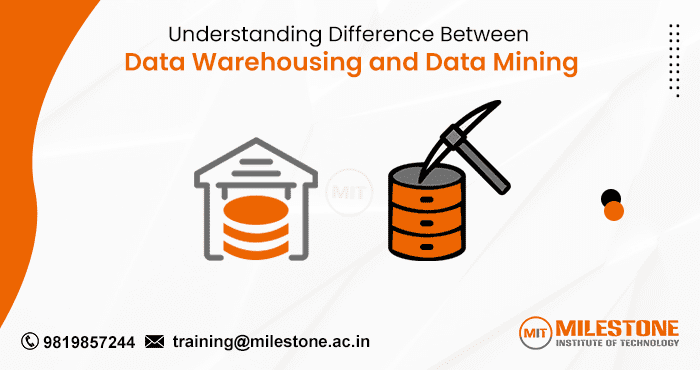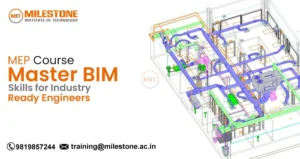Today’s businesses are continuously looking for ways to obtain crucial information from a huge amount of raw data. In this process the most important factors which come into action are data warehousing and data mining. Even though they are connected, they have diverse functions and use unique processes. In this blog post, we’ll understand the
difference between data warehousing and data mining – “data warehousing vs data mining”. For a better understanding, let’s dive into more specifics.
Difference Between Data Warehousing and Data Mining
| Aspect |
Data Warehousing |
Data Mining |
| Purpose |
Store and manage structured data |
Discover patterns and relationships |
| Nature of Data |
Historical, structured, integrated data |
Uncover hidden patterns in large datasets |
| Focus |
Data storage and retrieval |
Data analysis and pattern recognition |
| Techniques |
Online Analytical Processing and Extract, Transform, Load which is OLAP and ETL |
Clustering, classification, association rules |
| Output |
Organized data repositories |
Predictive models, patterns, trends |
What is Data Warehousing?
The process of collecting, organizing, and managing structured data from multiple sources into a single, central repository is known as
data warehousing. It is one form of data management system that is primarily intended to facilitate and assist business intelligence (BI) and analytics operations is the data warehouse. Data warehouses most frequently uses OLAP – Online Analytical Processing, this helps users to effectively run complicated queries and analysis on huge data-sets.
What is Data Mining?
Data mining is a process of collecting valuable insights, trends, and patterns from huge datasets. Many different statistical and machine learning techniques are used to find the hidden patterns, relationships, and anomalies within the data. Data mining is not similar to data warehousing, where data warehousing focuses on managing and storing data, and data mining focuses on analyzing data to extract essential actionable insights.
Characteristics Differences – Data Warehousing vs Data Mining
- Purpose: For reporting and analysis data warehousing majorly focus on storing data as well as managing structured data. While the goal of data mining is to find links and patterns in the data so that choices or predictions can be made.
- Nature of Data: Data warehousing deals with structured and historical data which is integrated from multiple sources but data mining looks after the hidden pattern in the big dataset which includes structured as well as unstructured data.
- Focus: The focus of data warehousing is on data retrieval and storage, guaranteeing data availability and consistency for analysis. On the other hand, data mining concentrates on pattern identification and data analysis with the goal of extracting useful insights from the data.
- Techniques: Data warehousing employs techniques such as ETL and OLAP for data integration and analysis, whereas data mining utilizes algorithms like clustering, classification, and association rule mining to uncover patterns and relationships within the data.
- Output: The output of data warehousing is organized data repositories, providing a unified view of data for reporting and analysis purposes. In contrast, data mining produces predictive models, patterns, trends, or anomalies discovered from the data.
How does Data Warehousing and Data Mining Work Together
While both have serve different purposes, they are closely interconnected and often work together to leverage the full potential of data. Data warehousing provides the foundation by storing and organizing data in a centralized repository, making it accessible for analysis. Data mining then utilizes this data to uncover valuable insights, which can be used to make informed decisions, improve business processes, and gain a competitive edge.
For example, a retail company may use a data warehouse to consolidate sales data from various stores and online channels. Researchers can then apply data mining techniques to analyze this data and identify customer purchasing patterns, preferences, and trends. These insights can inform marketing strategies, inventory management, and product recommendations, ultimately driving business growth and profitability.
Where to Learn these essential Skills – Data Warehousing and Data Mining
If you’re interested in mastering the concepts of data warehousing and data mining, consider enrolling in courses offered by reputable institutions like the Milestone Institute Of Technology such as
Data Science, Data Analytics and many more. They provide comprehensive training programs covering the basics as well as advanced techniques in MIT. Additionally, they offer courses on data mining algorithms, predictive analytics, and machine learning, equipping you with the skills and knowledge needed to excel in these IT fields.
Frequently Asked Questions
What are the most essential components of a data warehouse?
A data warehouse typically consists of data sources, ETL processes, a data warehouse database, and OLAP tools for analysis.
What are the key differences between a data warehouse and traditional database systems?
Unlike traditional database systems, data warehousing focuses on storing and managing historical data from multiple sources for analytical purposes, rather than transaction processing.
What are some common data mining techniques?
Classification, regression, association rule mining, and clustering are examples of common data mining methods.
How is data mining used in business applications?
Data mining is used in business applications for customer segmentation, market basket analysis, churn prediction, fraud detection, and predictive maintenance, among others.




